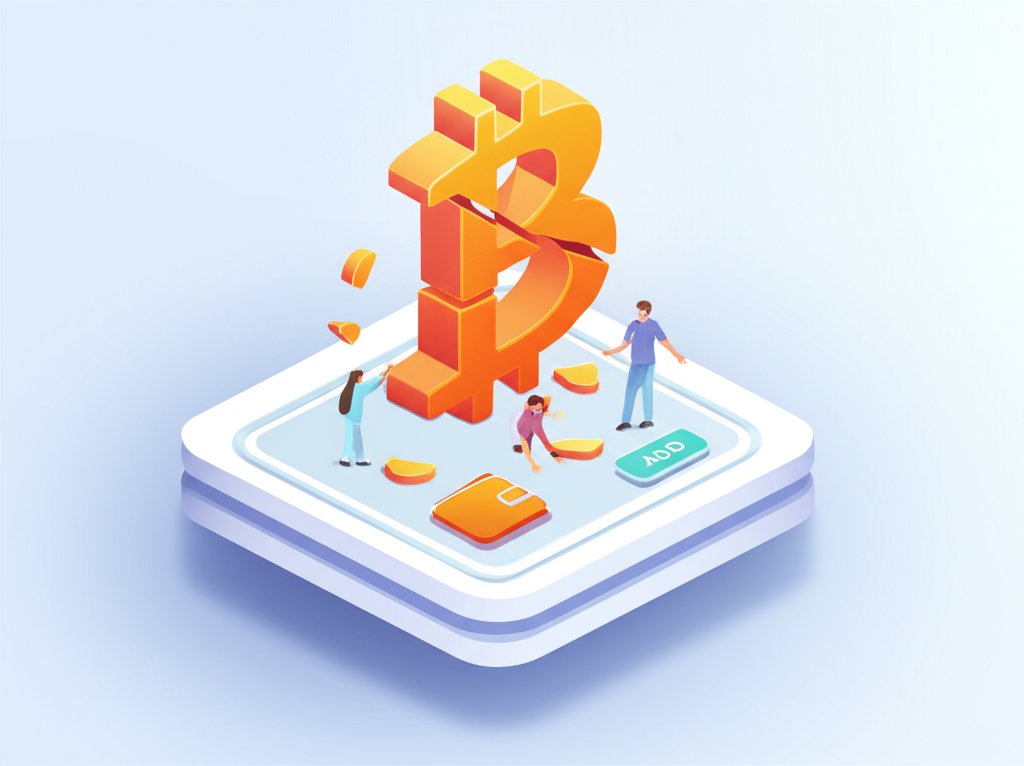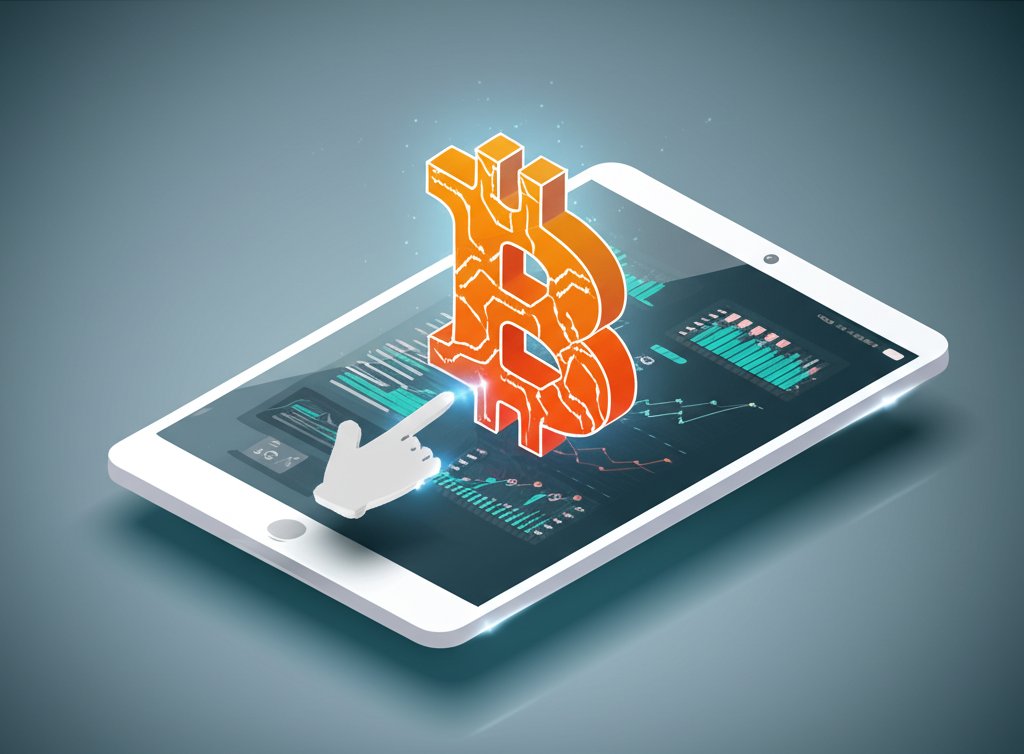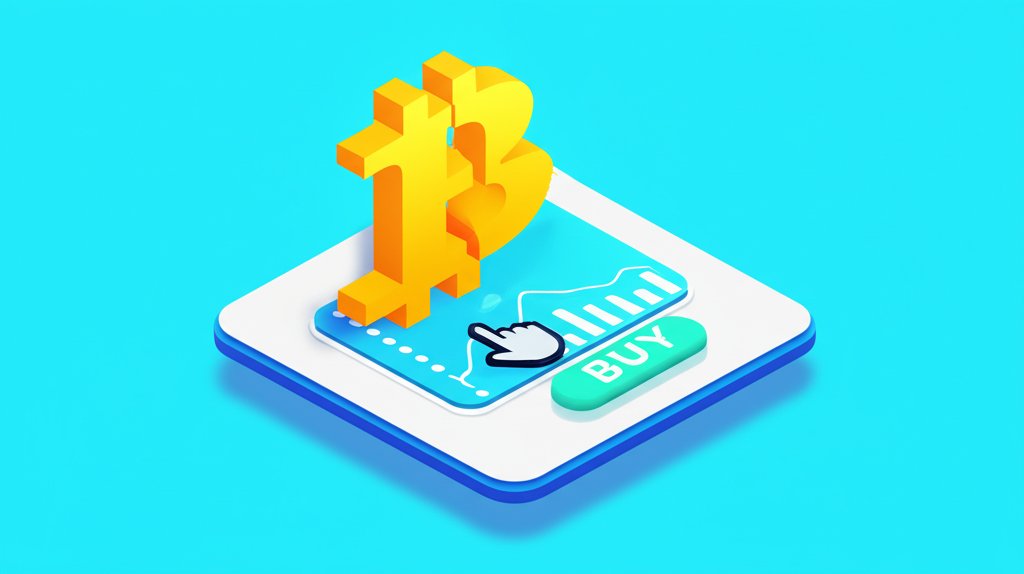
The world of Bitcoin often feels exclusive, a high-stakes game only for those with significant capital. You see Bitcoin trading at tens of thousands of dollars, and the natural assumption is, "I can't afford that." But what if I told you that you don't need to buy an entire Bitcoin to participate? The truth is, you absolutely can you buy part of Bitcoin, making crypto investing far more accessible than you might imagine.
This isn't a speculative loophole or a complex derivative; it's a fundamental design feature of Bitcoin itself. Just as you don't need to buy an entire share of a high-priced stock like Amazon or Google, you also don't need to buy a whole Bitcoin. This simple fact opens the door to strategic, low-stakes entry into the digital asset space for everyday investors.
At a Glance: Your Quick Takeaways on Partial Bitcoin Ownership
- Yes, you can buy fractions of Bitcoin. Bitcoin is highly divisible, allowing for investments of any size.
- The smallest unit is a Satoshi. One Bitcoin is divided into 100 million Satoshis (0.00000001 BTC).
- Use crypto exchanges. Platforms like Coinbase, Binance, or Gate.io facilitate these purchases.
- Start with small amounts. You can invest just a few dollars, though be mindful of fees.
- Dollar-Cost Averaging (DCA) is a popular strategy. Regularly invest a fixed dollar amount to mitigate volatility.
- Store your partial Bitcoin wisely. Exchange wallets offer convenience; personal wallets (hot or cold) offer greater security.
Unpacking the "How": Bitcoin's Elegant Divisibility Explained
Before diving into the "how-to," it’s crucial to understand why you can buy partial Bitcoin. This isn't a feature added later; it's baked into Bitcoin's very protocol. Unlike traditional physical assets that might be hard to split, Bitcoin is digital and designed for extreme divisibility.
Meet the Satoshi: Bitcoin's Smallest Slice
Think of it like this: A dollar is divided into 100 cents. A Bitcoin, however, is divided into a whopping 100 million smaller units. These tiny fractions are called Satoshis, named after Bitcoin's pseudonymous creator, Satoshi Nakamoto.
- 1 Bitcoin (BTC) = 100,000,000 Satoshis
- 1 Satoshi = 0.00000001 BTC
This means Bitcoin can be divided down to eight decimal places, far more granular than traditional currencies. So, when you invest $50 into Bitcoin, you're not buying a "piece" of a Bitcoin in a metaphorical sense; you're literally purchasing a specific number of Satoshis, which represent that fractional amount of Bitcoin. This inherent divisibility makes Buying fractional bitcoins not just possible, but standard practice.
Why Fractional Investing Is a Game-Changer for You
The ability to buy partial Bitcoin fundamentally changes the entry barriers to crypto investing. It transforms Bitcoin from an aspirational asset into an accessible one for nearly everyone.
1. Lowering the Entry Bar
Imagine wanting to invest in a valuable asset but needing tens of thousands of dollars just to get started. That's a significant hurdle. Fractional ownership smashes that barrier. You can begin with $10, $50, $100, or whatever fits your budget, allowing you to get exposure to Bitcoin's potential without needing a huge upfront sum. This democratizes access, bringing Bitcoin to a wider audience.
2. Mastering Risk Management
New to crypto? Volatility can be intimidating. Investing a small, manageable amount allows you to test the waters without putting significant capital at risk. You can learn how the market moves, understand your own emotional reactions to price swings, and gain confidence before committing larger sums. It’s a low-stakes way to educate yourself through practical experience.
3. The Power of Dollar-Cost Averaging (DCA)
One of the most powerful strategies for buying partial Bitcoin is Dollar-Cost Averaging (DCA). This involves investing a fixed dollar amount into Bitcoin at regular intervals (e.g., $25 every week, or $100 every month), regardless of the price.
How DCA works for partial Bitcoin:
- When Bitcoin's price is high: Your fixed dollar amount buys fewer Satoshis.
- When Bitcoin's price is low: Your fixed dollar amount buys more Satoshis.
Over time, this strategy helps to average out your purchase price, reducing the impact of short-term volatility and removing the stress of trying to "time the market." It's a disciplined approach that suits long-term investors and is perfectly suited for buying those smaller, regular fractions of Bitcoin.
Your Step-by-Step Guide: How to buy partial bitcoins
Ready to make your first move? The process is straightforward, but it requires using a reputable platform and completing a few standard steps.
1. Choosing the Right Platform: Your Gateway to Crypto
This is perhaps the most crucial first decision. You'll need a cryptocurrency exchange or brokerage that supports fractional purchases. Many popular platforms do.
Key considerations when selecting an exchange:
- Security: Look for features like two-factor authentication (2FA), cold storage practices (where most user funds are held offline), and insurance policies.
- Regulatory Compliance: Does the platform comply with financial regulations in your region? This often means adhering to Know Your Customer (KYC) and Anti-Money Laundering (AML) laws.
- Fees: Understand their fee structure for trading, deposits, and withdrawals. These can vary significantly and impact smaller investments.
- Liquidity: A highly liquid exchange means you can buy and sell your Bitcoin at stable, competitive prices without significant price discrepancies.
- User Interface: Is it easy to navigate, especially for beginners?
- Customer Support: Do they offer reliable help if you encounter issues?
Popular examples: Coinbase, Binance, Kraken, Gemini, and Gate.io are all well-known exchanges that allow fractional Bitcoin purchases. Always do your own research to find the best fit for your needs.
2. Setting Up Your Account and Verification
Once you've picked a platform, you'll need to create an account. This typically involves:
- Email and Password: Your initial setup.
- Know Your Customer (KYC) & Anti-Money Laundering (AML): This is a mandatory step for regulated exchanges. You'll need to provide personal identification, such as a government-issued ID (driver's license or passport), proof of address, and sometimes a selfie. This process verifies your identity and helps prevent illicit activities. It’s a sign of a legitimate and compliant platform.
3. Funding Your Investment
After verification, you'll need to link a payment method to deposit funds. Common options include:
- Bank Account (ACH Transfer/Wire Transfer): Often the most cost-effective for larger amounts, but can take a few business days to clear.
- Debit Card: Usually instant deposits, but often comes with higher fees than bank transfers.
- Credit Card: Some exchanges allow this, but fees can be very high, and using borrowed money for volatile assets is generally not recommended.
4. Placing Your Order: Buying Those Satoshis
With your account funded, you're ready to buy! Most exchanges offer a simple interface for this.
- Specify a Fiat Amount: This is the most common way for fractional purchases. You simply enter the dollar amount you want to invest (e.g., "$50"), and the platform will automatically calculate how much Bitcoin (i.e., how many Satoshis) that amount will buy at the current market price.
- Specify a Fractional Bitcoin Amount: If you know exactly how much BTC you want (e.g., "0.001 BTC"), you can enter that, and the platform will tell you the equivalent fiat cost.
Confirm your order, and within moments, your partial Bitcoin will appear in your exchange wallet. Congratulations, you're now a Bitcoin owner!
Navigating the Fine Print: Fees and Minimums to Watch Out For
While buying partial Bitcoin is accessible, it's not entirely free. Understanding the costs involved is crucial, especially for smaller investments.
Understanding Transaction Fees
Cryptocurrency exchanges generate revenue through fees. These can take several forms:
- Trading Fees: A percentage of your buy or sell order. These can range from 0.1% to 1.5% or more, often tiered based on your trading volume.
- Deposit Fees: Some platforms charge for depositing funds, especially with debit/credit cards. Bank transfers are often free but slower.
- Withdrawal Fees: When you move your Bitcoin from the exchange to a personal wallet, you'll likely incur a withdrawal fee, which covers the cost of the blockchain transaction (network fees) and sometimes an additional platform fee.
The "Too Small" Trap
Because of these fees, making very small purchases (e.g., under $10) might not be economically efficient. A $1 fee on a $5 purchase represents a 20% loss right off the bat, significantly impacting your investment.
General Recommendation: It's often advised to consolidate smaller investment intentions into slightly larger, less frequent purchases (e.g., $25 or $50) to make the fees more manageable as a percentage of your total investment. The sweet spot depends on your chosen platform's fee structure.
Where to Store Your Fractional Bitcoin: Security Matters
Once you own partial Bitcoin, you have a choice: leave it on the exchange or move it to a personal wallet. This decision hinges on your balance between convenience and security.
1. Leaving Bitcoin on the Exchange (Custodial Wallet)
Most people start by keeping their purchased Bitcoin directly on the exchange. This is known as a custodial wallet, meaning the exchange controls the private keys to your Bitcoin.
Pros:
- Convenience: Easy to buy, sell, and trade.
- Accessibility: Accessible from any device with an internet connection.
- No Technical Expertise: You don't need to manage private keys yourself.
Cons: - Security Risk: If the exchange is hacked, goes bankrupt, or experiences an outage, your funds could be at risk. (Remember the saying: "Not your keys, not your crypto.")
- Less Control: You're reliant on the exchange's policies and procedures.
For very small amounts, or if you plan to trade frequently, leaving funds on a reputable exchange with strong security measures might be acceptable.
2. Withdrawing to a Personal Wallet (Non-Custodial)
For increased security and full control, many investors choose to withdraw their Bitcoin to a personal, non-custodial wallet. Here, you hold the private keys.
Types of Personal Wallets:
- Hot Wallets (Software Wallets): These are connected to the internet.
- Desktop Wallets: Software installed on your computer.
- Mobile Wallets: Apps on your smartphone.
- Web Wallets: Browser-based interfaces (though often still managed by a service).
- Pros: Relatively convenient, often free.
- Cons: Still vulnerable to online threats (malware, phishing) if your device is compromised.
- Examples: Exodus, Electrum, Trust Wallet.
- Cold Wallets (Hardware Wallets): These are physical devices that store your private keys offline. They are considered the most secure option for storing cryptocurrency.
- Pros: Extremely secure, impervious to online hacks (as keys are offline).
- Cons: Less convenient for frequent transactions, typically have an upfront cost.
- Examples: Ledger, Trezor.
For any significant amount of Bitcoin, even if it's a fractional amount that grows over time, a hardware wallet is generally the recommended choice for long-term storage.
Smart Strategies for Maximizing Your Fractional Bitcoin Investments
Simply buying partial Bitcoin is a good start, but strategic thinking can amplify your efforts.
Embrace the Discipline of DCA
As mentioned, Dollar-Cost Averaging is your friend. Set up recurring buys on your chosen platform. Many exchanges allow you to automate these purchases, taking the emotion out of investing and ensuring you consistently accumulate Satoshis over time. It’s particularly effective in volatile markets like crypto, as it helps you average out your entry price.
Start Small, Learn, and Scale Up
Don't feel pressured to invest a lot upfront. Begin with an amount that you are comfortable losing entirely. Use this initial phase to learn about market cycles, blockchain basics, and how your chosen platform works. As your confidence and understanding grow, you can gradually increase your investment amounts. This iterative approach minimizes risk while maximizing your learning curve.
Understand Your Risk Tolerance
Bitcoin is known for its price swings. Before investing, honestly assess your personal risk tolerance. Are you comfortable seeing your investment value drop by 20%, 30%, or even more in a short period? Only invest what you can truly afford to lose without impacting your financial stability. Fractional investing allows you to match your investment size directly to this tolerance.
Common Questions and Clearing Up Misconceptions
Let's address some typical thoughts and clear up any lingering confusion about buying partial Bitcoin.
"Is buying partial Bitcoin like owning a share of stock, or is it different?"
It's actually more direct. When you buy partial Bitcoin, you are purchasing a direct, immutable share of the actual Bitcoin blockchain, represented by Satoshis. It's not a derivative, a share in a Bitcoin fund, or a contractual agreement. You own the underlying asset, proportional to the fraction you bought. This is different from, say, buying shares in a company that holds Bitcoin.
"Are there 'hidden' costs with partial Bitcoin purchases?"
Not hidden, but often overlooked by beginners. The main costs are the transaction, deposit, and withdrawal fees charged by the exchange, along with network fees when moving Bitcoin off an exchange. Reputable exchanges are transparent about these, so always check their fee schedule before you begin. The key is to be aware of them and factor them into your investment strategy, especially for smaller amounts.
"What's the absolute smallest amount of Bitcoin I can buy?"
Technically, you can buy as little as one Satoshi (0.00000001 BTC), which at current prices would be a fraction of a cent. However, practically speaking, exchanges impose minimum purchase limits (often around $1-$10) due to transaction processing costs and fees. Always check your chosen platform's specific minimums.
"Does owning partial Bitcoin give me fewer rights or benefits than owning a whole Bitcoin?"
No. Your fractional Bitcoin, or Satoshis, has the exact same properties as a whole Bitcoin. It's just a smaller quantity. You benefit from any price appreciation, and if you have enough, you can send it to others, use it for purchases (where accepted), or store it securely in a personal wallet. The rights are identical; only the quantity differs.
Ready to Embark on Your Bitcoin Journey?
The journey into Bitcoin doesn't demand a massive upfront investment or a deep understanding of complex blockchain mechanics. The ability to Buying fractional bitcoins empowers you to start small, learn at your own pace, and participate in a revolutionary financial technology.
By understanding Satoshis, choosing a reliable exchange, and adopting smart strategies like Dollar-Cost Averaging, you can responsibly begin building your Bitcoin holdings. Remember to prioritize security, be mindful of fees, and always invest only what you can comfortably afford to lose. The path to accessible crypto investing is wide open – take that first step, however small it may seem.

